Back to blog
5 MIN READ
5 Usability Testing Examples in Mobile Apps
PUBLISHED
21 June, 2023

Product Analytics Expert
7.49 billion is the projected number of mobile users expected in 2025, so you can imagine how monstrously high the number for mobile app usage could be. We will spare you! But the good news is you can stand out from the ocean of mobile apps by focusing on your apps’ usability.
Usability testing determines whether users can intuitively use your app to achieve their goals. Test results offer design improvement ideas to support your business objectives and increase ROI. With 46% of businesses not taking usability testing seriously, investing in usability presents a considerable opportunity to blow away your competition.
Fortunately, UXCam’s product and behavior analytics for mobile apps can support your usability testing processes. Our leading light-weight mobile SDK collects behavior analytics for usability analysis.
Read on as we discuss usability test examples to inspire your test ideas.
What is mobile app usability testing?
Mobile app usability testing evaluates how easy your app is to use by observing users. In a usability test, the participant is given a goal to achieve using the app, and their behavior and verbal or non-verbal feedback is observed.
Usability test results give product teams an idea of how easy users find the app to navigate and use. Product teams can then use this data to support app enhancement decisions to increase ROI by serving customers through better design. Essentially, usability tests will help you when building an app around your users.
Using UXCam’s comprehensive mobile analytics tool, mobile app teams learn exactly how people experience their apps. We offer quantitative and qualitative data, session replays, heatmaps, user journeys, and more for a 360-degree understanding of your apps’ usability.
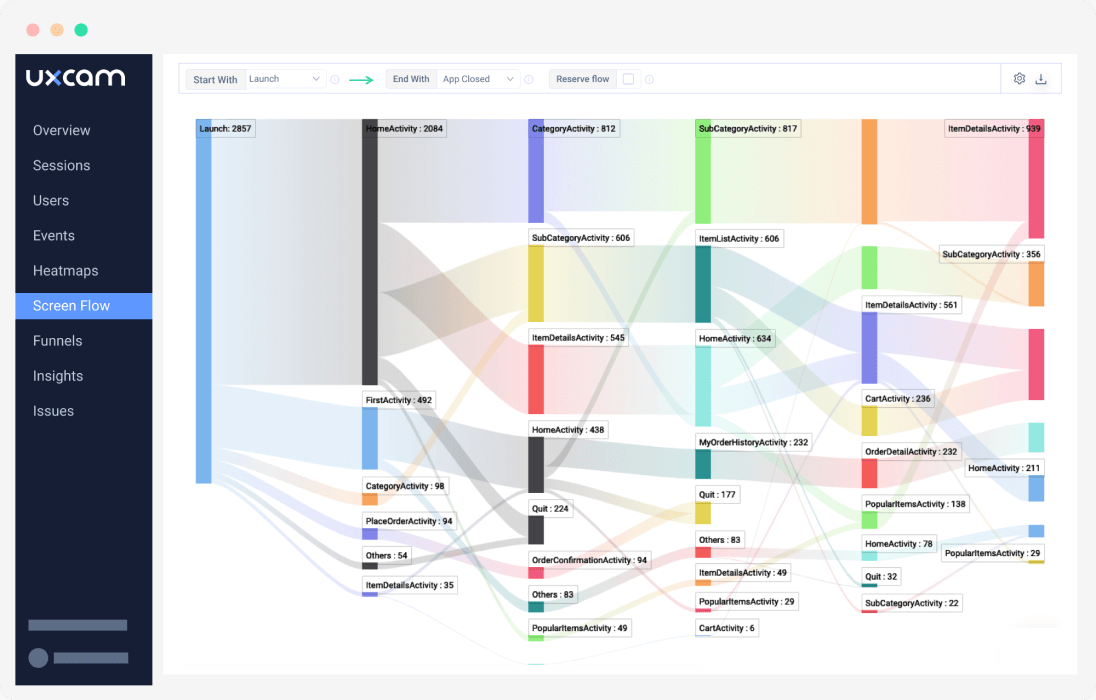

Types of mobile app usability testing
In a nutshell, a usability test session comprises a participant and a facilitator who issues tasks for the participant to complete and observes how they use the app to complete the tasks.
The flow of information looks like this:
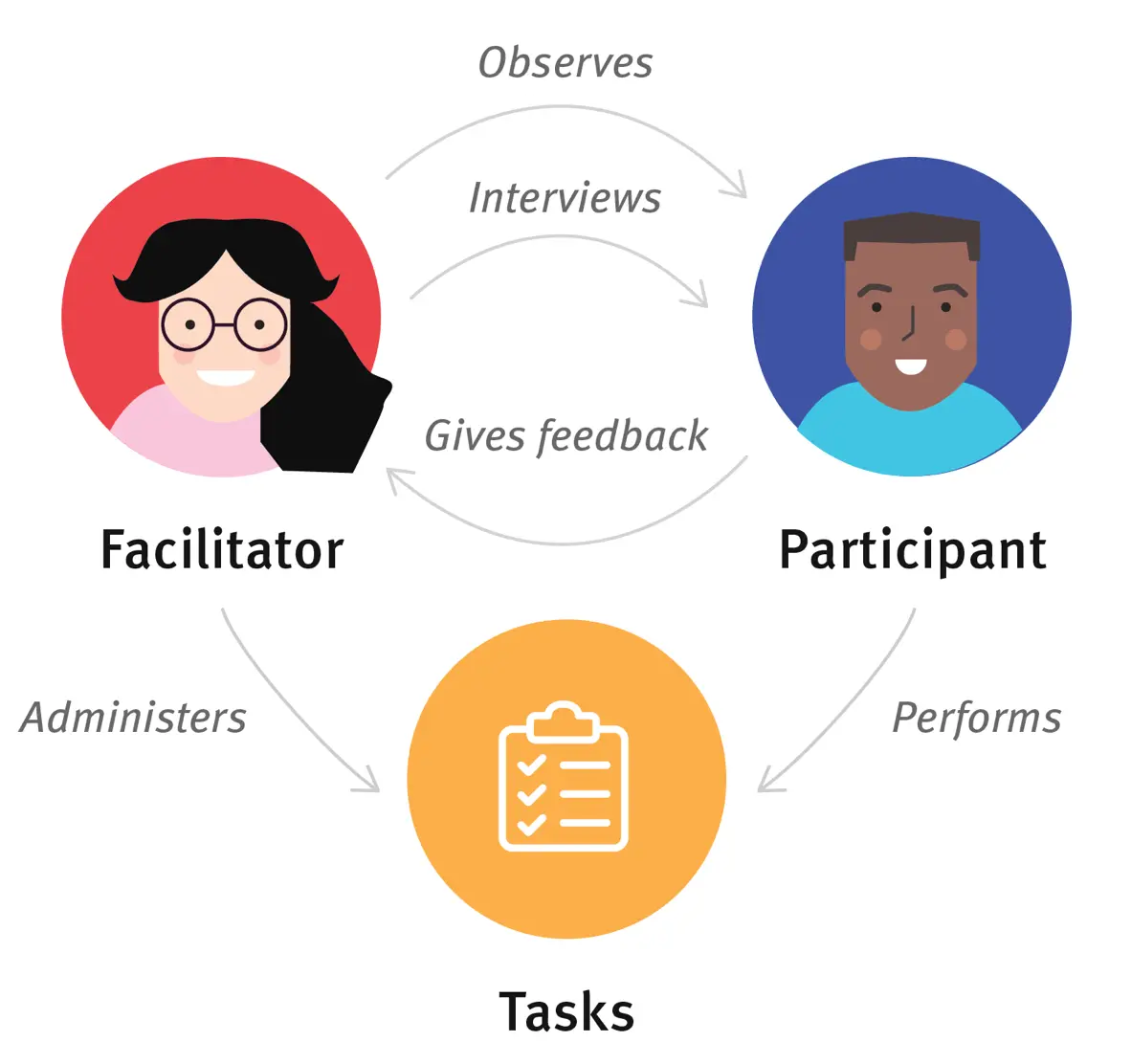
Here are the main mobile app usability test methods:
Qualitative collects insights, findings, and narratives about how people use your app. Qualitative usability testing is best for identifying user experience problems.
Quantitative focuses on numbers and collects metrics that represent the user experience. This type is best for collecting benchmarks for UX comparisons.
In-person requires participants to execute the usability tests in the same physical location as the facilitator.
Remote moderated is like in-person usability testing; however, the moderator facilitates and asks the participant to perform tasks from a different location. Remote moderated tests can be performed using screen-sharing software.
Remote unmoderated is the most popular type since they typically require less money and time than in-person or moderated studies. Researchers use remote-testing tools to send participants their tests and instructions, and product teams receive session recordings and metric data such as task success rate.
How to create task scenarios for usability tests
Begin with a goal. Consider what the end goal is in using your app.
Add context. Include relevant information by explaining why they would use your app.
Include the necessary details. For example, if they need to input specific information, ensure they have what they need to complete the test.
Ensure the goal is achievable. The goal should have an attainable and satisfying “end.”
Write your scenarios and perform a dry run. You can conduct as many test runs as necessary to see how well the test flows and see whether you have too many or not enough. Ask people who have not used your app before to dry-run the tests.
In addition:
Make your task scenarios realistic. Users will likely be more engaged when they can relate to the scenario.
Avoid helping the participant or giving clues. This can jeopardize the validity of the test. You won’t know how effective your app design is if you assist the user.
Be clear. Task scenarios should be specific without the need for further clarification.
Usability testing examples for mobile apps
Below, we’ll look at some contextual examples of usability tests in action.
1. Provide feedback to KAYAK
Task scenario: You booked a 5-star hotel for a weekend in Venice but found the standard to be more like a 2-star. You feel the hotel was falsely advertised and wish to make a complaint.
Task goal: To complain about a recent hotel stay and include pictures.
Context: You were not happy about the hotel standard and feel you have overpaid. The food was not to a 5-star standard, and the state of the room when you first arrived was appalling.
Relevant info: Ensure the participant has some image files to attach to the complaint and an email address to complete the “To” field. Once the details are complete, they won’t need to "Send."
End state: The users will get to the send feedback screen with the option to "Send.”
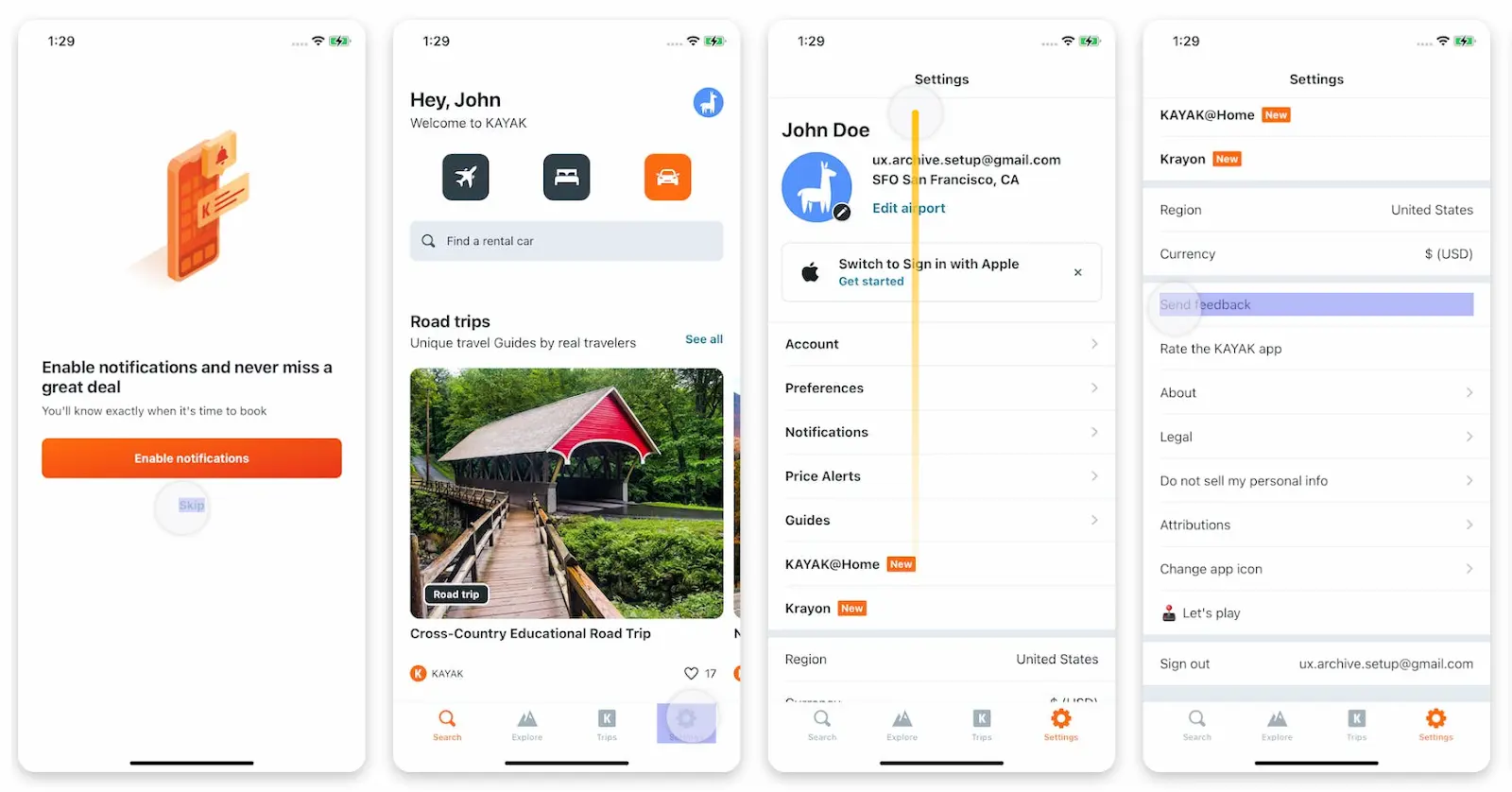
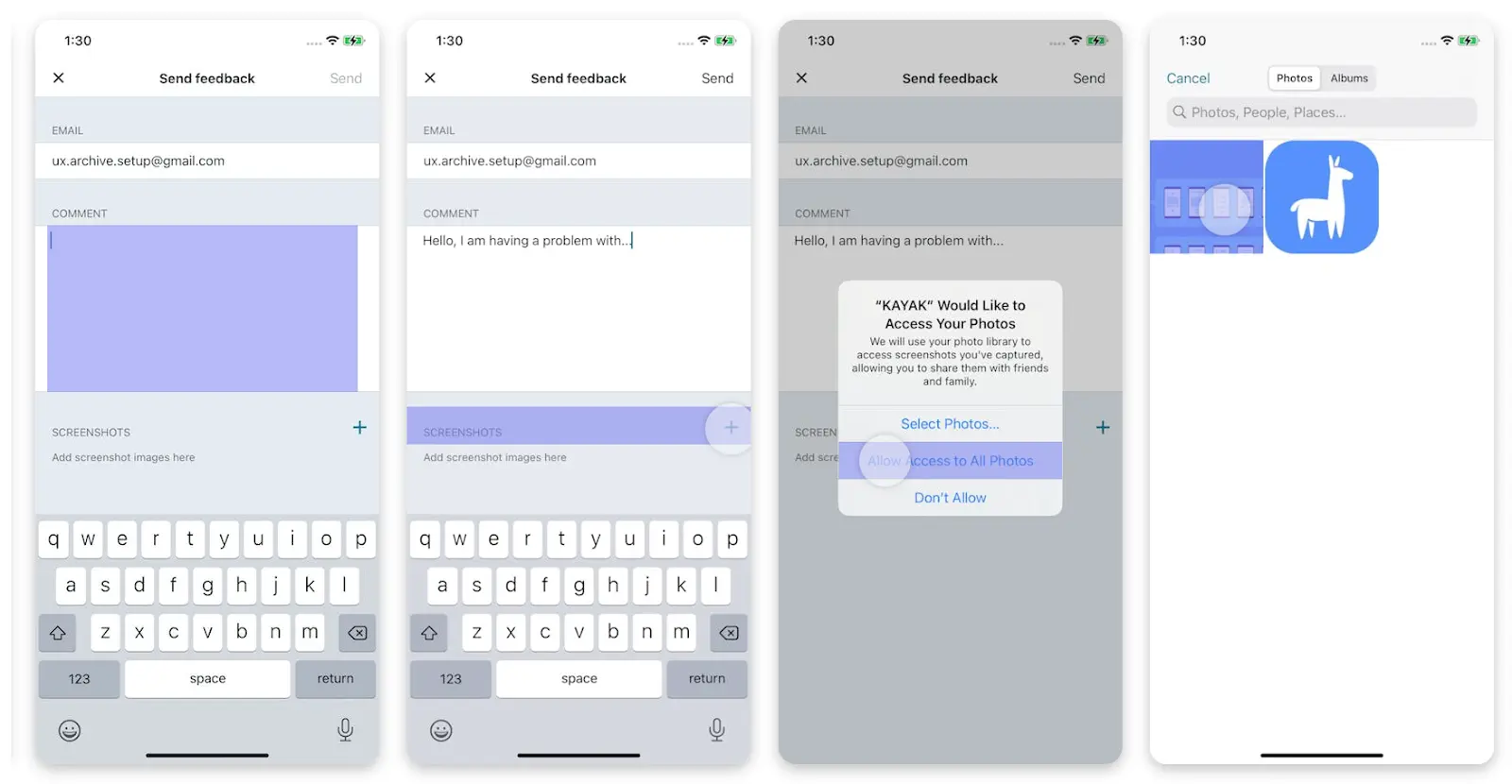
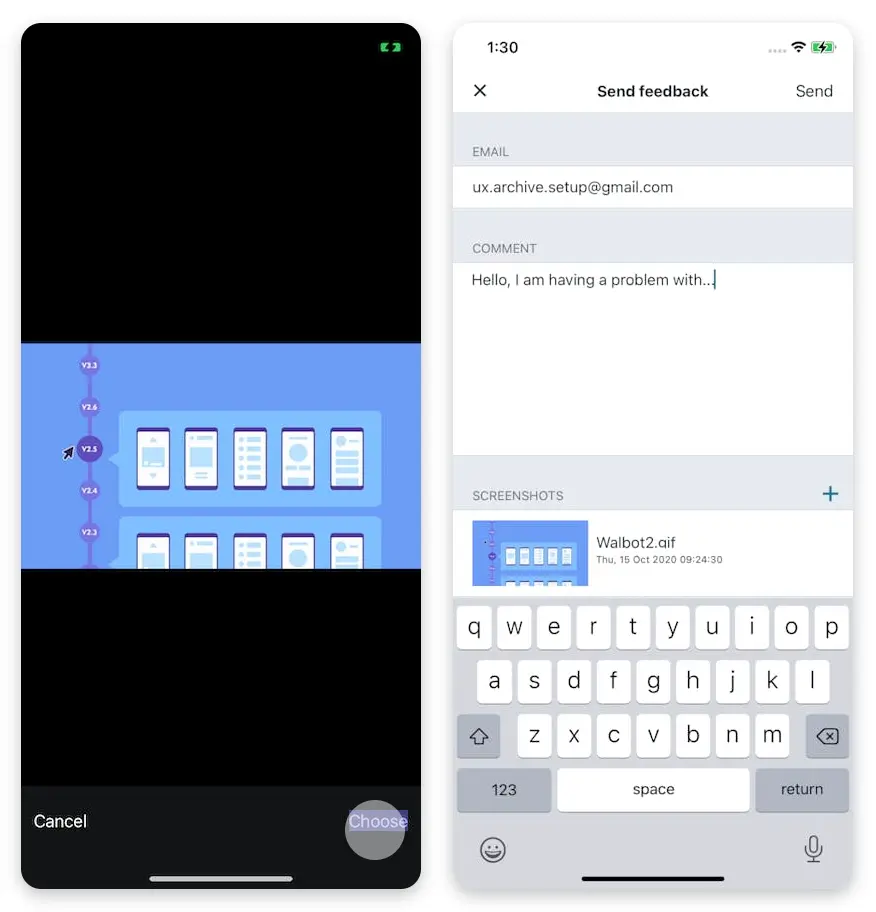
2. Setup a payment method with Airbnb
Task scenario: You recently set up an Airbnb account and must include your payment details.
Task goal: To add your credit or debit card payment details.
Context: N/A
Relevant info: Give the participant fake credit card details to complete the process.
End state: The user will get to the success confirmation screen.

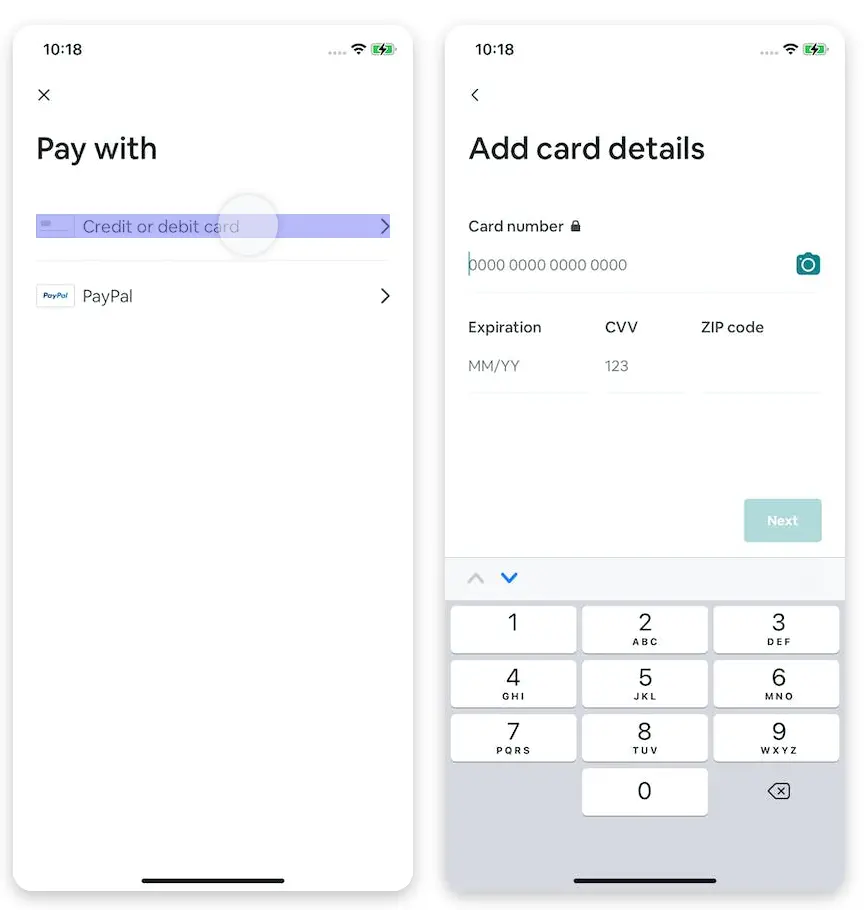
3. Registering a new account with Discord
Task scenario: You’d like to join Discord to share tips and make friends with some of the communities.
Task goal: To register a Discord account.
Context: Your friends have told you there is a huge gardening and interior designing community on Discord that some of your friends are a part of and regularly receive great tips.
Relevant info: Give participants fake account details, including email addresses for the verification email to be sent to.
End state: Users will end on the success confirmation screen.
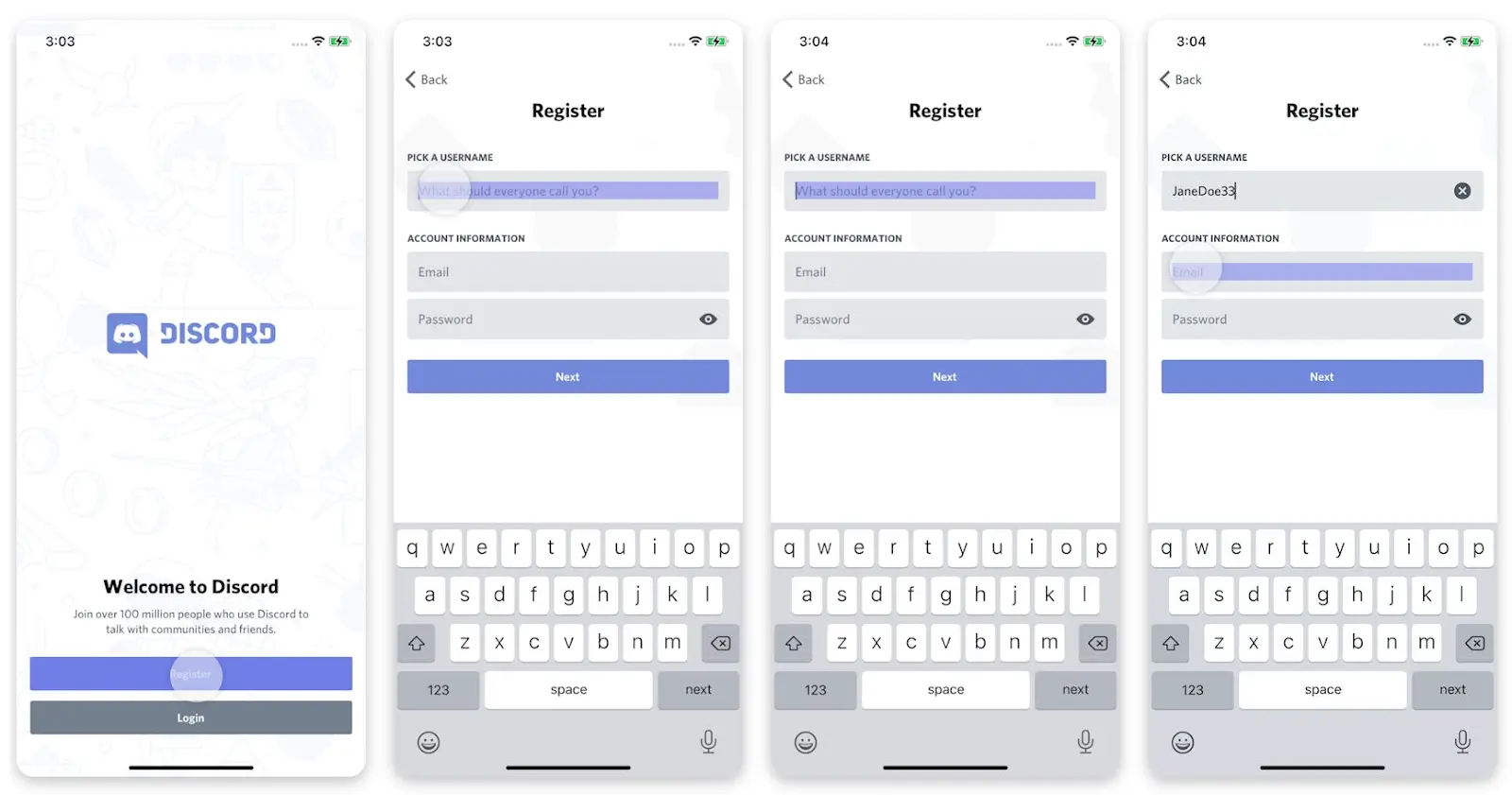
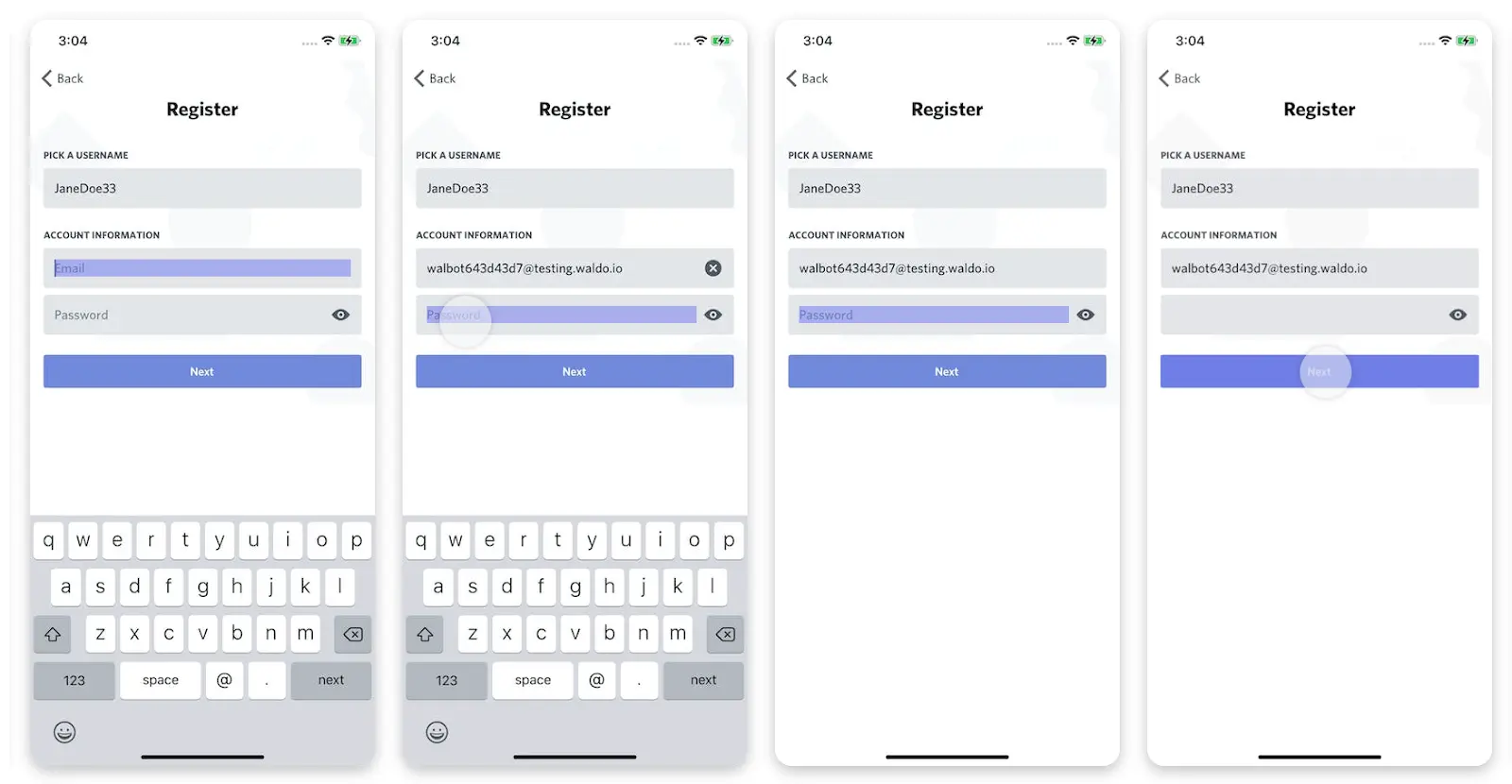
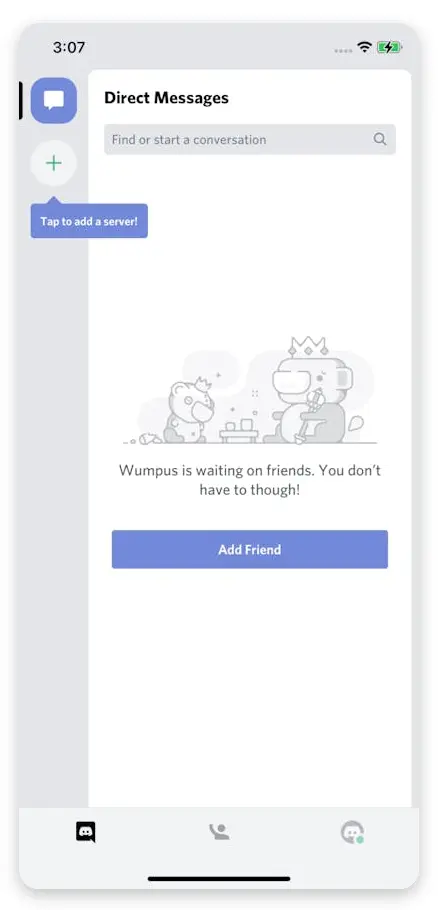
4. Complete account profile with Twitter
Task scenario: You must complete the account setup for your Twitter account.
Task goal: To complete the Twitter account setup.
Context: When you sent up your Twitter account a few weeks ago, you didn’t have time to complete all the details. You’d now like to include your profile picture, a header, and a description.
Relevant info: Give participants fake person details, including a picture.
End state: Users should see the profile updated confirmation screen.
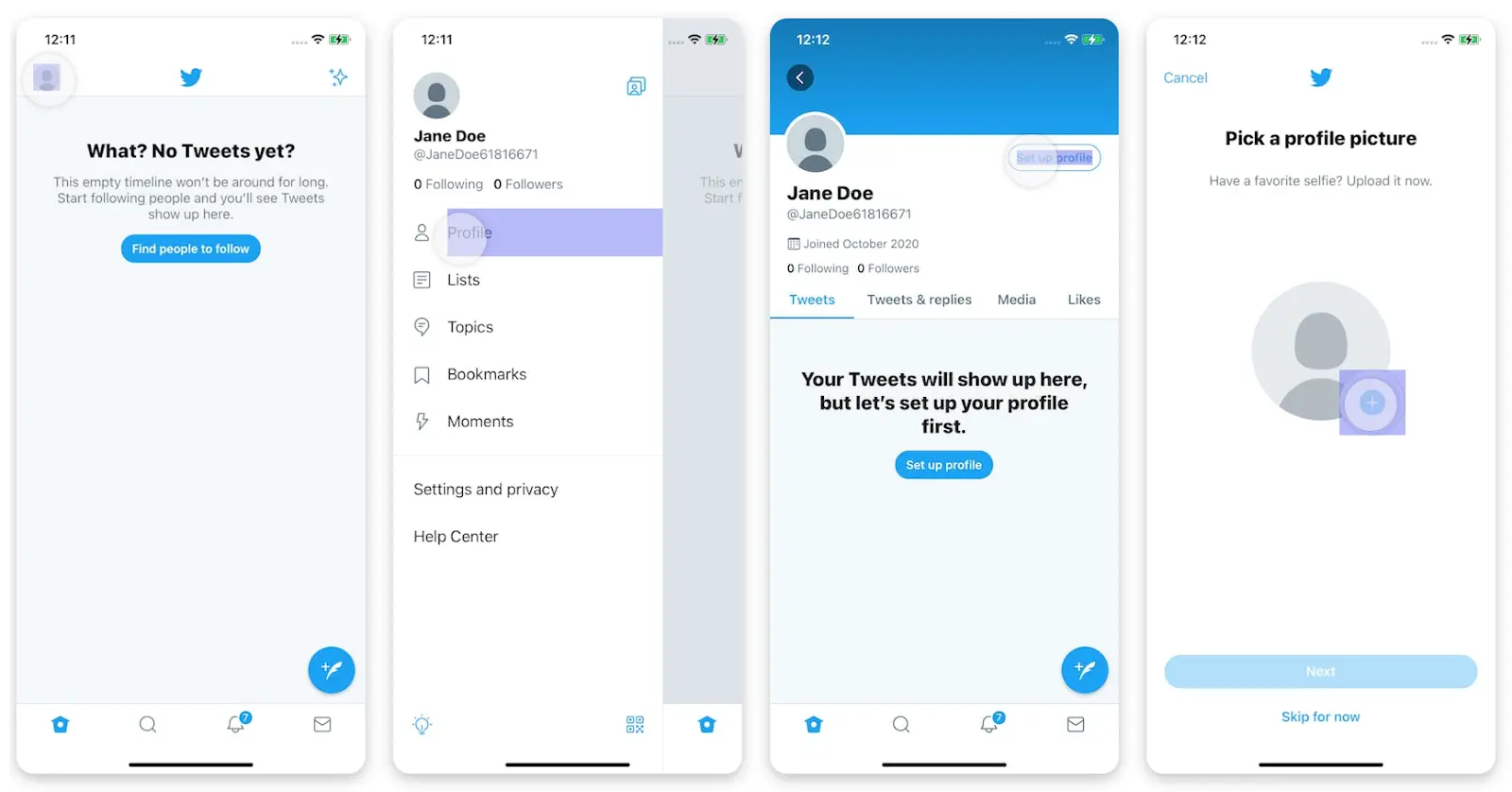

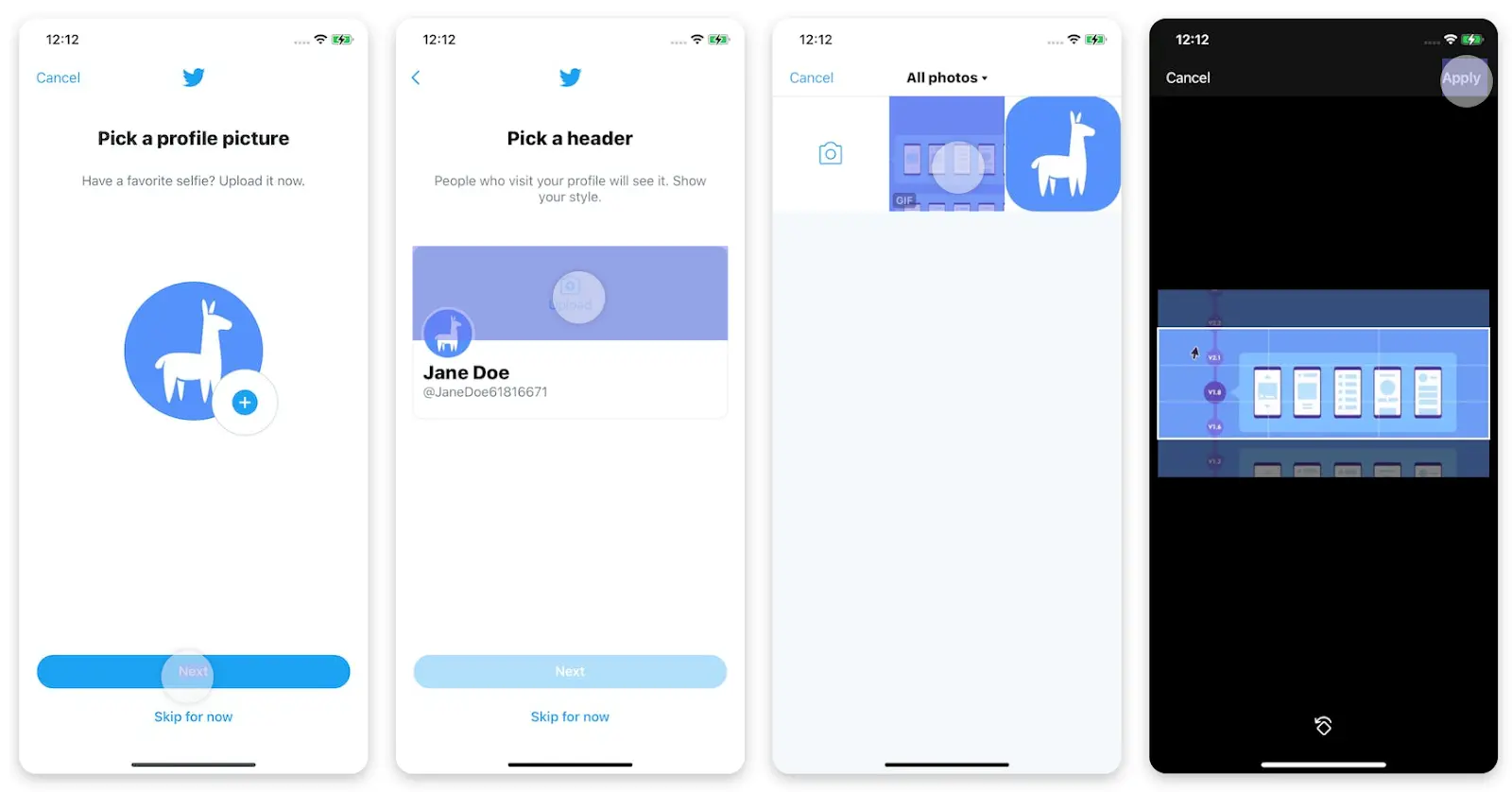
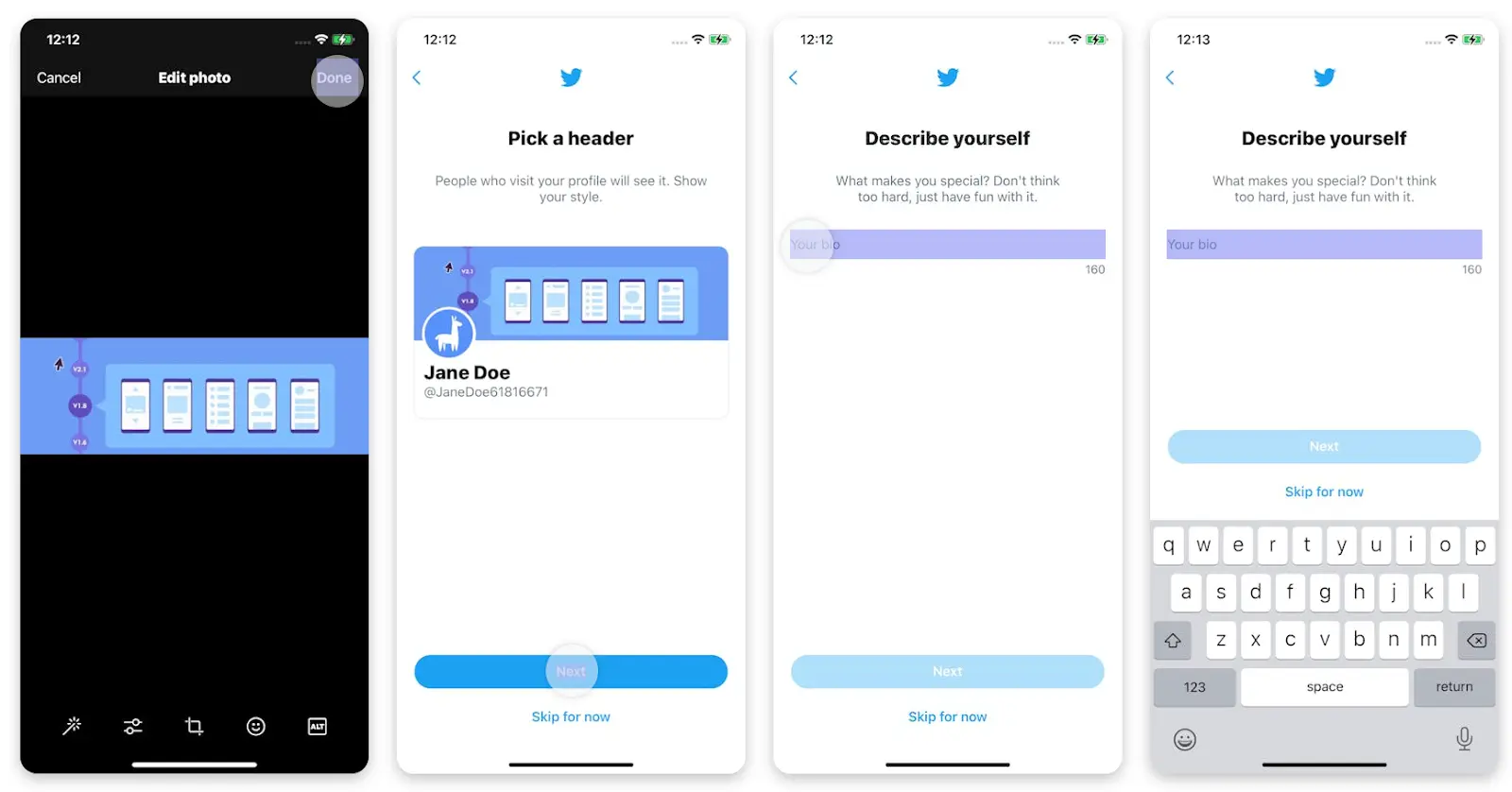
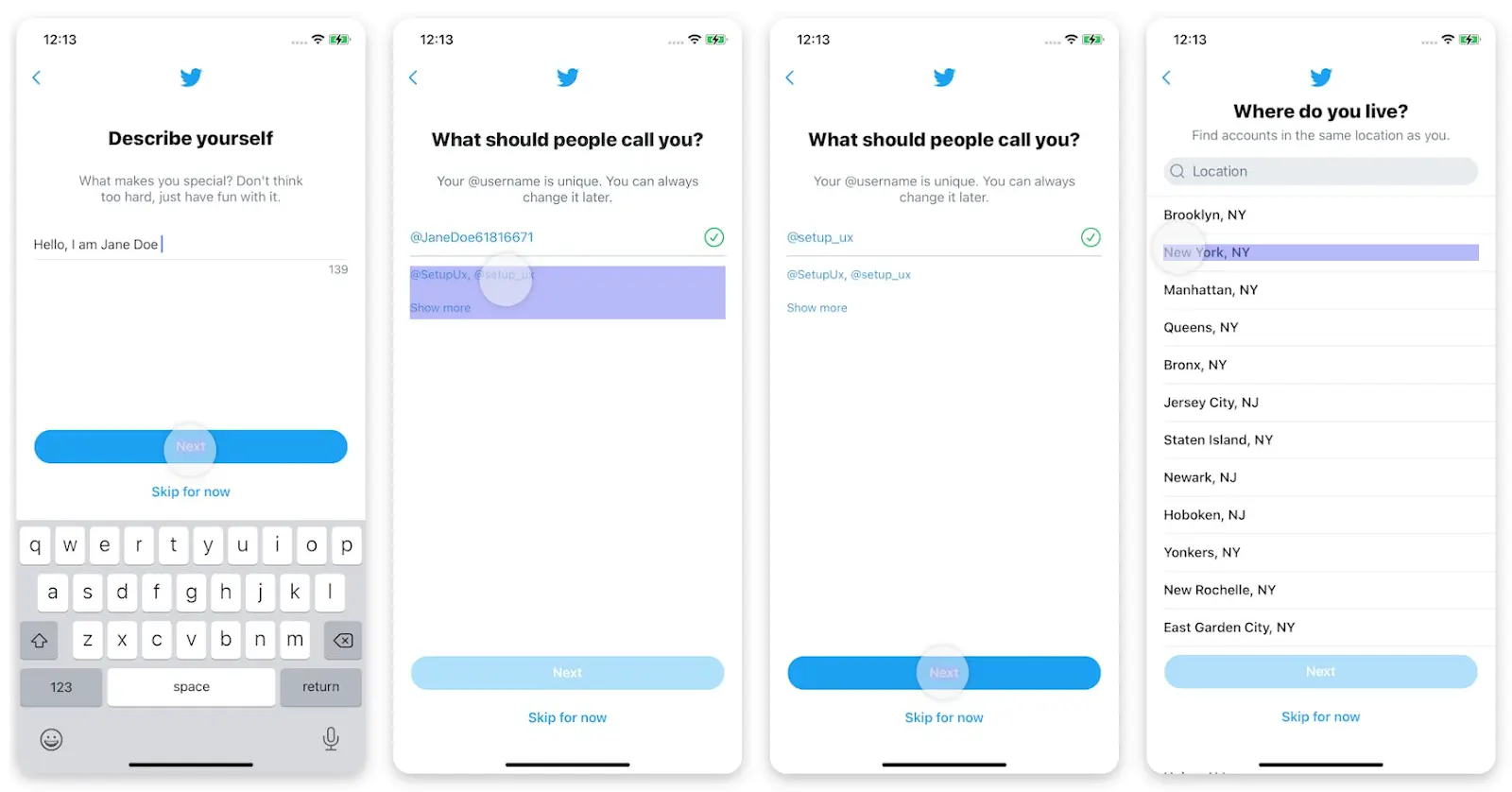

5. Placing a food order with DoorDash
Task scenario: You would like to use DoorDash for the first time to order some food.
Task goal: To place a DoorDash order from an over 4.5-star rated fast-food restaurant without an account.
Context: You’ve never used DoorDash before but would like to see the popular fast-food options nearby.
Relevant info: N/A
End state: Users will see the option to sign up for DoorDash to complete their order.
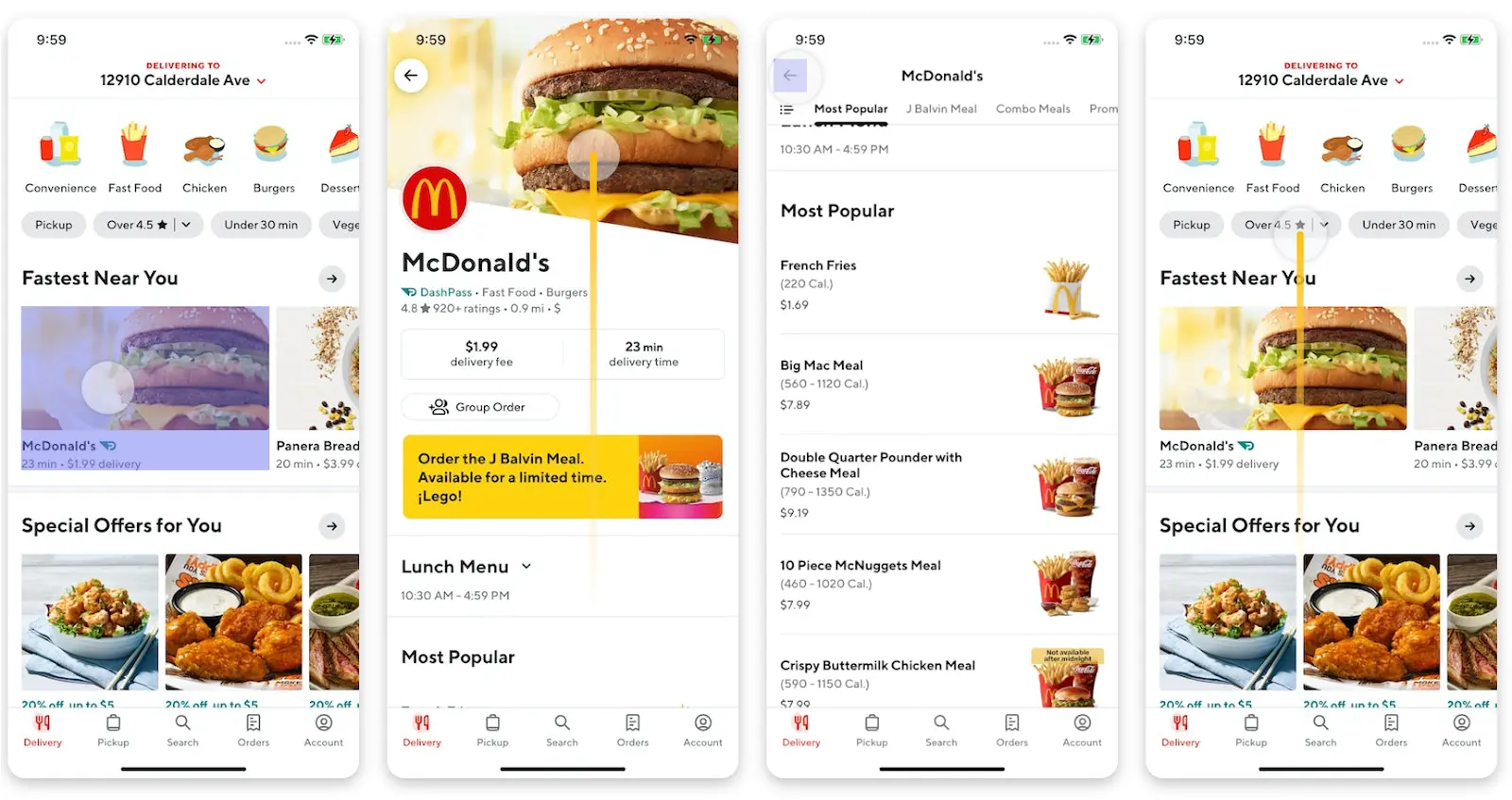
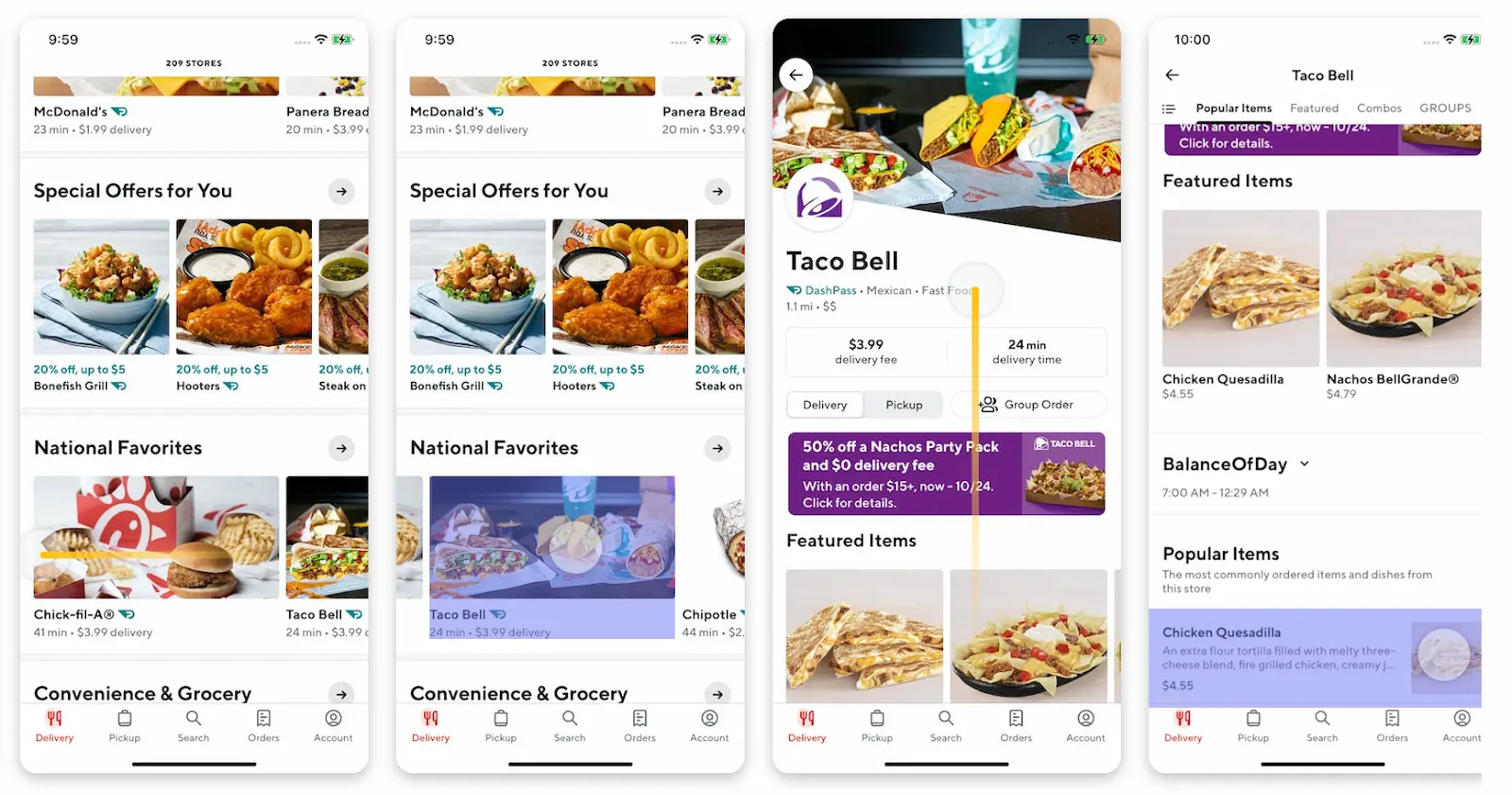
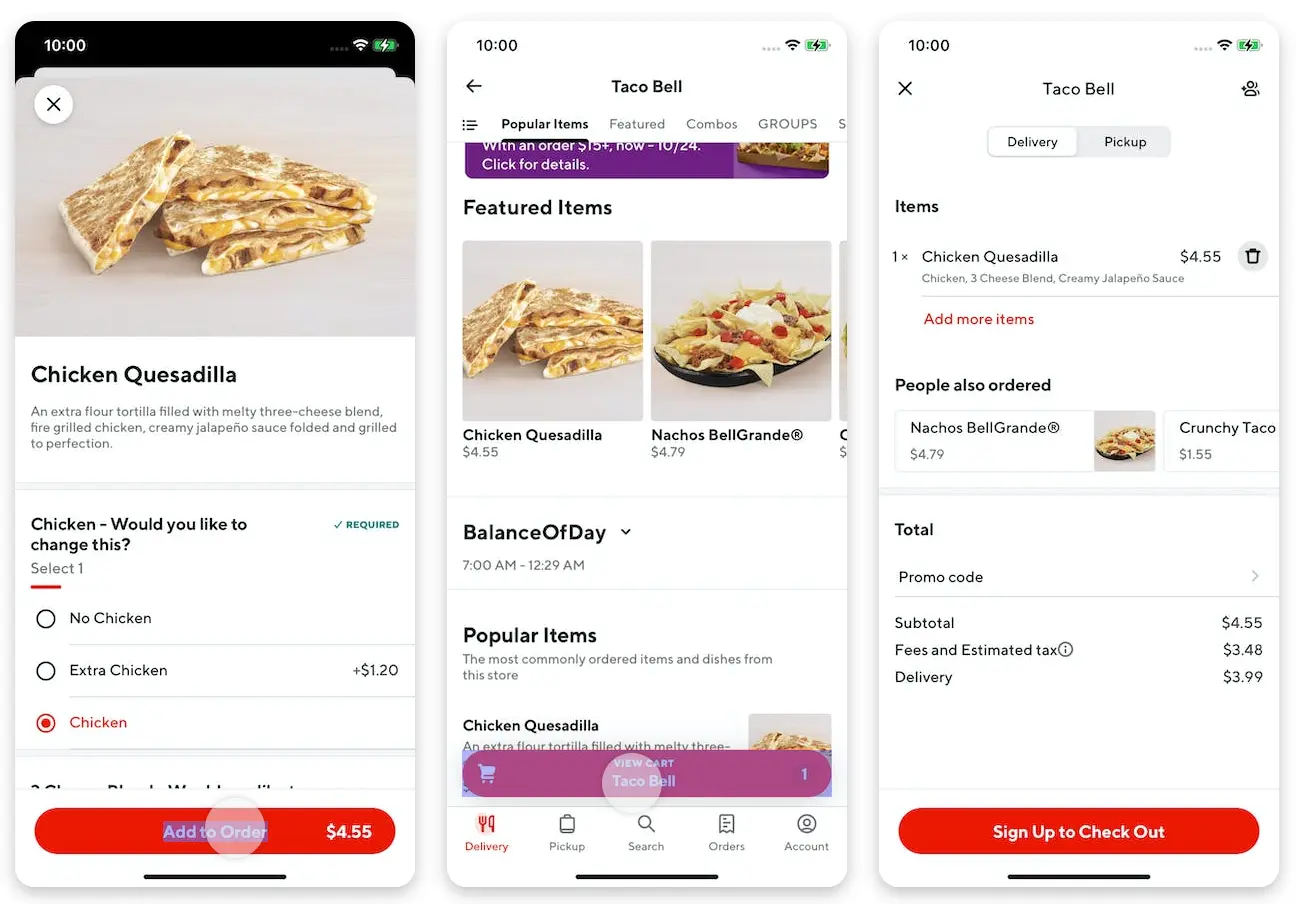
UXCam delivers authentic behavior analytics for usability tests
A successful app should be intuitive and easy for users to use straight away. And the results you get from usability tests are intended to develop efficient, learnable, and sticky experiences for your target customers.
When considering a tool to support your usability testing, UXCam provides comprehensive quantitative and qualitative behavior analytics. Global mobile brands trust us to gather genuine stats to learn how people experience their apps for confident design decisions.
Getting started is easy. Sign up for a free to conduct your next usability tests.
AUTHOR

Tope Longe
Product Analytics Expert
Ardent technophile exploring the world of mobile app product management at UXCam.
What’s UXCam?
Related articles
UX design
Auditoria de UX – Como Realizar uma (Etapas, Modelos e Checklist)
Navegue por auditorias de UX com facilidade usando nosso guia para iniciantes, com instruções passo a passo, modelos personalizáveis e um checklist...

Tope Longe
Product Analytics Expert
UX design
UX Audit - How to Conduct One (Steps, Templates & Checklist)
Navigate UX audits effortlessly with our beginner's guide, offering step-by-step instructions, customizable templates, and a detailed...

Tope Longe
Product Analytics Expert
UX design
12 UX Metrics to Measure and Enhance User Experience
Unlock product success by tracking the right UX metrics. Learn 12 essential metrics, how to measure them, avoid common pitfalls, and take action with tools like...